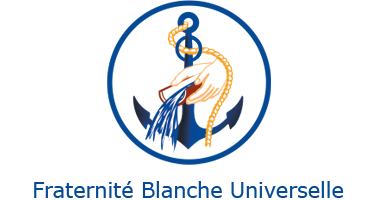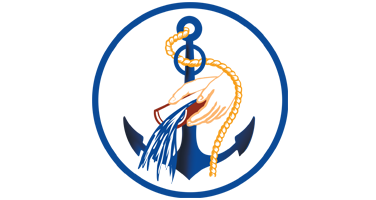
In a few clicks, here are some answers to commonly asked questions.
Is white compatible with universal?
The word “white” has a similar symbolic meaning from one civilization to another.
The colour white is generally associated with the idea of daylight, and as a result of the idea of good morality. Black, depending on whether it is associated with night or darkness, is more ambivalent. But dawn, daylight or sunlight always have a positive touch.
From a cultural point of view, white is the colour of peace : people at war wave a white flag to call for a cessation of hostilities ; while red is the symbol of war. The dove of peace is white. White is also associated with the immaculate purity of snow. Or with the sweet tenderness of a breastmilk, symbol of love and life.
In physics, white light represents the synthesis of all colours. Scientists show that when white light passes through a prism, it is divided into countless colours. In a symbolic way, therefore, the white colour embraces and brings together the opposing parts or the different colours. Leonardo da Vinci, inspired by an intuition from his practice as a painter, considered that “white is not a colour by itself, it is the receptacle of all colours”.
In this sense, white reflects a value of universality : it somehow condenses diversity and wholeness, adding to it the symbolism of peace or harmony.
In accordance with this theme, the term “universal white brotherhood” seeks to convey the idea that all human beings, with no exception and with all their diversity, are invited to create around them a brotherly, harmonious life in respect of each origin, culture, belief or conviction.
Finally, from a spiritual point of view, the color white symbolizes the luminous radiance of the virtues of the soul. Purity, selflessness, the holiness of a man or woman emanate and radiate around them like a white and rainbow coloured halo, regardless of their physical appearance or the colour of their skin.
What is the content of this teaching?
The philosophy of Master Omraam Mikhaël Aïvanhov is about living a fulfilling and meaningful life. It addresses essential issues that concern everyone, such as the meaning of existence, life and death, happiness or also love, and it helps us to better understand them. In doing so, it provides the keys to getting to know ourselves, to develop ourselves and to overcome the challenges we face in our life.
Who is your God?
There is only one God, there is not our God or your God.
God is one.
The human languages give Him different names, but He doesn’t belong to anyone, He opens Himself to all and to each one.
He is the life, the light and the love given to all creatures.
What is your view on health?
Our health depends strongly on our lifestyle. Not only is it important to eat healthy, to breathe fresh air, but it is also important to have good thoughts and feelings in order to stay healthy. In addition to food, our thoughts and emotions have an impact on our health. For this purpose, the Master has given several methods to live a healthy, pure and harmonious life. The best medicine is a daily practice of a certain lifestyle, that is, the way we think, feel, believe, love and nourish ourselves.
You talk about brotherly love towards all humans, but can one really love everyone?
To love is not just to be in love. As we all know, there are several forms of love: passionate, altruistic, maternal, brotherly, mystical, and so on… Some forms of love have their origin in physical attachments, others in affinities, sympathy, while others are inspired by a more impersonal understanding that each human being is governed by the same universal flow of life that runs through all creatures.
It is this feeling of unity that gives us the opportunity to overcome our apparent differences and to love the whole world. This impersonal love strengthens us, for it echoes in us with the infinite brotherhood of small and great worlds, visible and invisible, which some call the kingdom of God.
Can one spiritualize love and sexuality?
Read the pages Sexuality (1) to (7) in the section “About Bioethics”.
The unity in the Teaching
The teaching of Master Omraam refers to many other religious traditions …
A single source: the light
The spiritual teaching of Master Omraam Mikhaël Aïvanhov is known to be heir to the Christian esoteric teaching of his Master Peter Deunov. He is imbued with the same veneration of the Bible, the Gospels and the sublime figure of Jesus Christ.
Master Omraam is faithful to this spiritual heritage. But his broader vision of the world takes into account many other wisdoms or cultures spread throughout humanity. During his youth he studied various subjects at university and read a lot – although he likes to present himself as an ignorant person. He truly belongs to his century. He is interested in everything, in societies, science, technology and in the new discoveries that foreshadow the Age of Aquarius, that period characterized by tolerance and brotherhood which he wishes for humanity throughout his whole life. Invited to many countries, he travels and meets countless people from all walks of life and from different religions.
Although in the 20th century the international situation forbids or stifles exchanges – two wars, the “cold war”, the “iron curtain”, anti-colonial struggles -, it is a time when new means of communication are multiplying and he is interested by them: rapid means of transportation, radio, movies, television, publishing, newspapers, the early days of computers… Cultures meet and interpenetrate more and more. Christianity discovers that it is not the prerogative of the whole truth, for the Spirit is larger than a single religion.
Intuitively an Initiate “feels” his era: his soul is connected to the collective human soul by all the subtle threads of understanding, care, compassion and love. The Master has made himself a multiple soul. To every being who comes to him, he asks fraternally: “How can I be useful to you?” and maybe this is the true religion.
In his wisdom we find essential features of ancient philosophies: the Tao, the Vedas, the Upanishads, the Bhagavad Gita, Confucianism, the Presocratics, Orphism, Pythagorism, Plato, the Neoplatonists… Not quotations sewn together without any continuity, but a coherent vision of the world. He often quotes and comments on the Emerald Table of Hermes Trismegistus or on key phrases of mazdeism. He studies and interprets astrology and alchemy, and deciphers the initiations of the Pyramids. He explains the spirit of Vessak, the Buddhist celebration of the full moon of May. He shows esteem for Muslim piety, for Sikkhism… He spent a year in India, visiting the whole peninsula, and quite naturally referring to the existence of various yogas so as to establish himself two new practices which he calls “yoga of nutrition” and “yoga of sunrise”… Surya, the sun, origin of all life on our planet Earth, source of invigorating light that nourishes all our bodies, physical and subtle… the sun, open door to the Divinity… He always refers, almost daily, to the Bible or the Gospels. He exposes extensively the living arrangement of the sephiroths of the Jewish Kabbalah and advises his disciples to explore it as a method of understanding the invisible world and as a path of prayer. In his understanding of Living Nature, he mentions the spirits of the four elements of nature, much as the Celtic world saw them or as animism, shamanism, etc. felt them….
Listening to him, one realizes how much all these philosophies or these various forms of devotion, love and respect for the luminous beings of the invisible world fit harmoniously into his vision of the world. It would be a mistake to listen to or read only two or three of the five thousand or so lectures he has given, and to judge that his teaching is made up of bits and pieces gleaned here and there by chance. The serious student who seeks to live this wisdom from within, feels that beneath this diversity of references there is a burning flame that unites them.
An inner unity, for this teaching has a coherence that is organic, so to speak. *
An external unity with other traditions: listening to the words of Master Omraam, one feels a kinship with all the authentic spiritual traditions of humanity. For they all come from a single source of Eternal Wisdom: even without historical proof, the disciple has an intuitive certainty of this.
This inner and outer unity that we so deeply feel, where does it come from? From the shared idea of light. Towards what does it tend to? Towards the light, the incarnation of light in the earthly world.
In all religions or spiritual traditions, the Master has identified, selected and put within our reach an essential theme: Divine Light. His teaching is centered on this unique source from which he draws himself.
Love of the Light, fusion with the Light, consecration of the whole being to the Light that springs from the heart of God.
(January 2020)
* On this subject, see the “Synoptic Table”, elaborated by Master Omraam himself, a synthesis of all the methods he recommends and their objectives, Coll. Synopsis n° 2, part III, 1
What does the word " esoterism " mean to you? A philosophy that is difficult to understand? Only for a small number of people?
What does the word ” esoterism ” mean to you? A philosophy that is difficult to understand? Only for a small number of people?
The word “esoteric” comes from the Greek “esôteros” meaning: which is inside.
Esoterism means not only a vision of the world, but also a behavior in life, easy to understand and open to all those who wish sincerely to get to the heart of things.
The esoteric attitude is, so to speak, an attention that is born and that grows silently within, it is the life of the soul. It’s just as mysterious and simple as love.
“Look,” said the guide to the visitors on Heritage Day, “here is a scene depicting the Last Supper, Jesus and his apostles. You will recognize some of them: Judas by holding a pouch of money, Peter by holding a sword, and John by leaning on the heart of the Christ. »
It is John’s attitude that, in our eyes, reveals the meaning of the word ” esoterism “.
According to you, which objectives arer priorities?
The philosophy of Master Omraam Mikhaël Aïvanhov focuses on two questions which are closely linked: the development of the human being and brotherhood.
If the Master deals with subjects such as the Kabbalah, astrology or alchemy, he addresses all of these disciplines with the objective of giving the human being the elements he needs to live a beautiful and meaningful life. The priority is not so much the acquisition of esoteric knowledge but the way of living: it is by improving the way we live that we will be able to understand the deep meaning of life.
He emphasizes the importance and benefits of community life for the development of the human being. Living amongst others, doing things together, allows each person to get to know himself or herself better, to be confronted with his or her weaknesses and to make efforts to improve.
Collective life must also lead us to become aware of the link that unites humans to one another. All are brothers and sisters in a large family and we learn to cultivate and nurture this relationship in order to form a brotherhood, that is to say, a community in which there is more love between human beings. This is the reason why fraternal centers have been created. These centers are schools in which we practice living a brotherly life and develop the awareness that we are all members of one universal family.
Throughout the year, several meetings are organized in the fraternal centers in order to allow those who are interested to come and live a fraternal life and to practice the methods and exercises that have been given by Omraam Mikhaël Aïvanhov. Among these methods are meditation, watching the sunrise, breathing and gymnastic exercises, paneurythmia, the yoga of nutrition or music and choral singing
What do you call the "Hight Ideal"?
He who nourishes a great ideal of spiritual elevation, the High Ideal, connects himself with a superior world, the only food capable of nourishing his soul and spirit.
The high ideal rallies and directs our energies, it gives them the right direction and the right order so that we can realize it in our lives. This implies staying vigilant and selecting our activities to free ourselves and feel liberated.
Why the silent meals?
The state in which we eat will have consequences on our health and on our inner states. Eating in a state of agitation and anxiety can lead to digestive problems, or even more serious issues if it becomes a habit. On the other hand, eating in a calm state allows our whole being to receive the beneficial elements contained in food. We can concentrate fully on the food we absorb. We can chew the food slowly and for a long time so that the body can assimilate it properly. Silence helps to restore peace and allows us to do this work of communion with the food we eat.
How do you understand universality?
Some ideologies conceive of universality as a dominant model imposed on many, only benefiting a minority; and the means used to achieve it range from persuasion to corruption or violence.
The Universal White Brotherhood has a completely different conception of universality.
Universality is of the realm of the spirit. To have a universal consciousness is to feel immersed in the infinite flow of divine life, that life which imbues all worlds, visible and invisible, material and subtle, all dimensions of existence, that life which imbues our planet with the four elements, earth, water, air, fire, and the human, animal, vegetable and mineral kingdoms. A vast symphony unites all beings to their common Source of life, and it is this common origin that makes them all brothers and sisters.
The dearest wish of the Universal White Brotherhood is that fraternal relations are established between all the men and women of the whole earth. Its methods are those of absolute respect for life, freedom and dignity of human beings.
And instead of imposing brotherhood, its first aim is to practise it. Methods which make it possible to embody this ideal of belonging to a great human family are proposed and applied: thus, the beings who are different will no longer be considered as inferior; to each one the conditions will be given to express the best of himself.
The proof is already there: a world of justice and peace is possible.
How to define prayer?
Prayer is the possibility given to man to have access to another dimension, it is a request made to the divine, to our Higher Self. In order for the divine world to answer our prayers, it is a question of setting in motion a process that will increase until they are fulfilled.
To do this, we must begin by working, by planting a seed, and that seed will one day become a tree.
What effect does utopia have on reality?
Utopia is an optimistic dream.
We are talking here about an open, clear, soft utopia, smiling like the face of the angel of Reims or like a ray of morning sunshine. A dream that contains all the beautiful virtualities of a morning consecrated by prayer.
A natural utopia. For there is a law in nature, made by nature and applied in a natural way, here it is: what we think, what we imagine, what we wish for and what we verbalize with love, that is what will happen sooner or later.
So utopists are creators: they set the causes. Spiritual, mental, emotional, dynamic causes. Clearly, lucidly, voluntarily, they create in their minds images, paths, diagrams, circuits, routes, openings which by the effect of this law will be transformed into reality.
Fantasy is a truly powerful suggestion. It inspires and creates favourable conditions for the peace and happiness of tomorrow.
Si vous avez d’autres questions…


